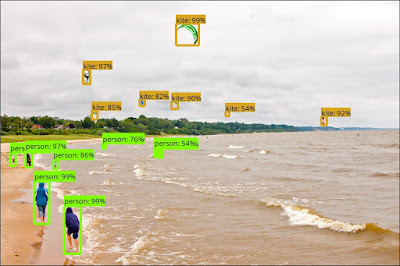Computer vision i.e., a computer recognising the contents of the image; roughly, image recognition has become a primary need in different sectors. To achieve a perfect computer vision, Google developed a state-of-art machine learning (ML) system. Not just the products and services, but also such machine learning systems impart enough progress into the research. The major challenge with machine learning that these ML models should be capable of identifying multiple objects in single image. Investing significant amount of time with the state-of-art ML systems could probably address this challenge.
The latest Google's state-of-art ML system was placed first in the Common Object COntext Challenge (COCO challenge), in October, 2016. Since then, this system has generated Machine Learning results that helped several research publications. This ML system has been implemented into certain products such as NestCam. The NestCam help the machines to detect objects in the image; this is what is implemented in Google image search. Google has removed captcha for human verification and introduced a new model for verification. In this the user have to identify different things like vehicles, street signs etc. in a given image. Google was capable of achieving this verification through its research in machine learning and the NestCam service.
In this context, Google has released the TensorFlow object detection API to the developers. This API was developed on top of TensorFlow. This API allows the developers to construct, train and deploy object detection models into several applications with ease. The API can be downloaded from Github repo.
Here is what Google has for its developers with this API release:
Here is the image in which the ML has detected the objects along with their accuracies. Image source: Google research blog.
The latest Google's state-of-art ML system was placed first in the Common Object COntext Challenge (COCO challenge), in October, 2016. Since then, this system has generated Machine Learning results that helped several research publications. This ML system has been implemented into certain products such as NestCam. The NestCam help the machines to detect objects in the image; this is what is implemented in Google image search. Google has removed captcha for human verification and introduced a new model for verification. In this the user have to identify different things like vehicles, street signs etc. in a given image. Google was capable of achieving this verification through its research in machine learning and the NestCam service.
In this context, Google has released the TensorFlow object detection API to the developers. This API was developed on top of TensorFlow. This API allows the developers to construct, train and deploy object detection models into several applications with ease. The API can be downloaded from Github repo.
Here is what Google has for its developers with this API release:
- A selection of trainable detection models, including:
- Single Shot Multibox Detector (SSD) with MobileNets
- SSD with Inception V2
- Region-Based Fully Convolutional Networks (R-FCN) with Resnet 101
- Faster RCNN with Resnet 101
- Faster RCNN with Inception Resnet v2
- Frozen weights (trained on the COCO dataset) for each of the above models to be used for out-of-the-box inference purposes.
- A Jupyter notebook for performing out-of-the-box inference with one of our released models
- Convenient local training scripts as well as distributed training and evaluation pipelines via Google Cloud
Here is the image in which the ML has detected the objects along with their accuracies. Image source: Google research blog.
 |
| Google Tensorflow object detection results |











0 comments:
Post a Comment